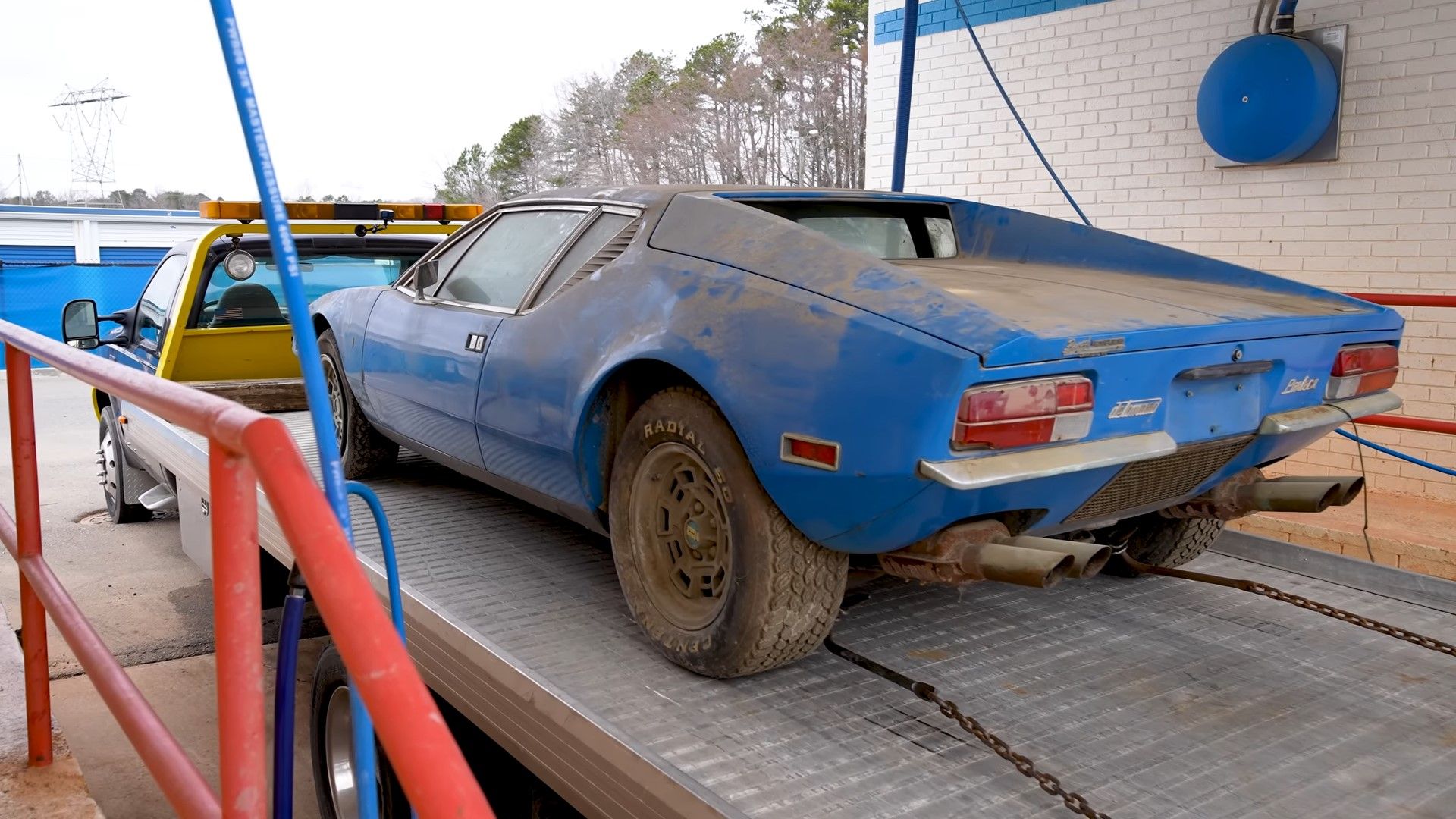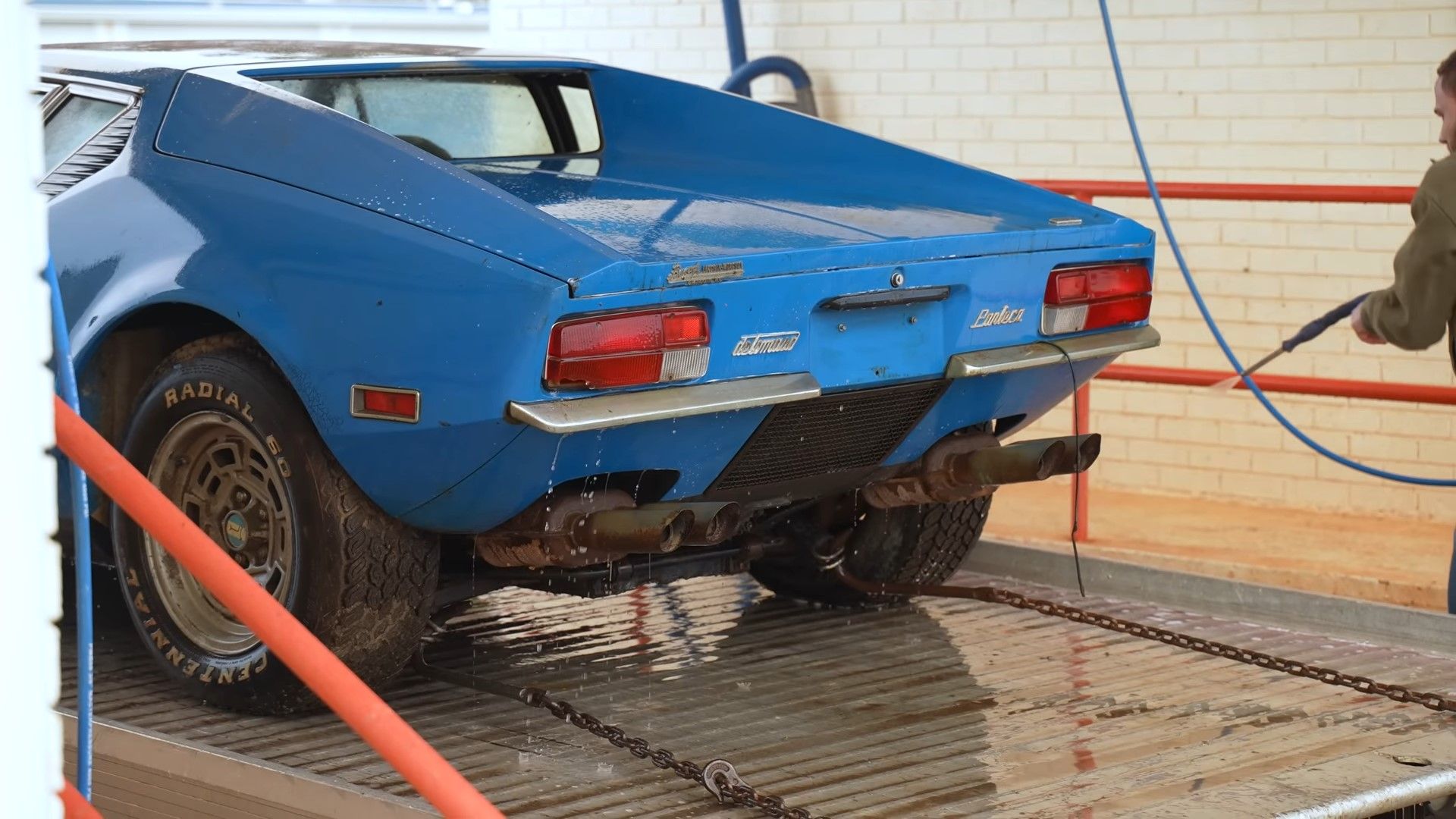Key findings
- The De Tomaso Pantera is a unique Italian classic car with its own charm, thanks to the combination of Italian styling and the Ford Windsor V8 engine, which sets it apart from the European sports car elite.
- The 1972 De Tomaso Pantera under review in this article has been sitting in a shed for 45 years, covered in dust and dirt, but its body and chassis are in surprisingly good condition, with minimal rust issues.
- The interior of the Pantera is also well preserved: original sensors, a whole ceiling lining, soft seats and even a factory 8-channel radio. The expert gave a thumbs up. The next step will be to move the car from the shed to a flatbed truck for further restoration.
De Tomaso Pantera is an exception in the Italian language world classic cars. Despite having typical 1970s styling cues from Italian design houses such as Gandini and Pininfarina, the Pantera had an engine that would have made the European sports car elitists retreat.
Despite the naysayers, the combination of a Ford Windsor V8, Italian styling from Ghia design studio and a price tag well below any Lamborghini or Ferrari of the 1970s meant the Pantera was something of a supercar for everyone.
Volume from Hagerty’s Barn Hunter takes a look at this 1972 De Tomaso Pantera with the help of his son Brian and Davin of Redline Rebuild to see if they can bring this iconic classic Italian-American sports car barn find back to its former glory.
This De Tomaso Pantera Barn find requires careful inspection
This Pantera is located in North Carolina in a large storage shed filled with various sports cars from the 1970s, and the De Tomaso is in its own storage room right in the back of the barn. Along with his colleagues at Hagerty, Tom also enlisted classic car and Pantera expert Keith Irwin to give the Pantera a proper inspection.
Once inside, the group got their first look at the Pantera to find it covered in 45 years of dust and dirt. Comically, scattered among the dust on the windshield are paw prints that Tom suspects are from raccoons or cats that climbed over the car.
The underside of this Pantera is in excellent condition
- De Tomaso Pantera were known for rust problems.
- The most common problem areas were the door sills, engine cross members and the front trunk.
- Due to the central location of the engine, mechanics often left dents lying on the roof while accessing the engine.
- Despite a small amount of rust, the body and chassis of this example are in excellent condition.
Keith starts looking under the car to see if he can spot any issues with the typical Pantera trouble spots. The first thing he notices is a small dent under the front fascia, which he says is very common because many drivers have a habit of running through parking islands. Next, Keith notices some rust in the coolant pipes. However, this is again normal – especially considering that the car has not been driven for 45 years.
As with other classic Italian sports cars, De Tomaso used virtually no rust protection, and many cars have quite serious rust problems. Fortunately, however, Kate noticed very little rust on the underside and was pleasantly surprised at how well the metal case held up.
He also notes that many mechanics would often open the engine hatch and lay down on the roof to gain better access to the engine during tune-ups or repairs. As a result, many Pantera roofs have body-shaped dents or impressions, but this example is completely straight.
Keith says some parts are inevitable due to age, including brakes, coolant, hydraulics and any rubber, as they naturally break down over time. He then moves on to the Pantera’s interior and discovers that the car has only 45,693 miles on it. Despite the dust and dirt, Keith is also very impressed with the interior.
He says the headliner is still in great shape, the seats are still soft, and the car has all the original gauges and even the factory 8-channel stereo. The dash and panel are also in excellent condition with virtually no visible cracks or deformation. With Kate giving the thumbs up to Tom and the rest of the group, the next step is to move the Pantera from the shed to the flatbed truck.
This Italian classic is finally moving after 45 years
Tom wasn’t sure if the wheels were locked, but luckily the car was already sitting on the wheel carts. To make room, the team had to remove several tool boxes, shelves and even an old Sunbeam Tiger. With this in mind, they soon pulled the Panther out of the shed and loaded it onto the platform.
Next, the team took the Pantera to a car wash and washed all the dust and dirt off the body and engine bay. Once the car was clean, the team took it to the shop so they could put it on a lift for further inspection. Keith and Tom are constantly impressed with the condition of the Pantera, especially given how original the car is.
Tom says the car was last serviced in 1976/77. He figures it was only on the road for about five years before it was permanently parked. As a result, he says it’s more than likely that all of the car’s parts are either original off the production line or are OEM parts as opposed to aftermarket. Next on the agenda is to see if the engine will rev. However, the team will work on it in the next episode of the series.
The De Tomaso Pantera was a replacement for the Shelby Cobra
The Pantera’s history dates back to 1967, when then-President of Ford Motor Company Lee Iacocca insisted on the Blue Oval to create a mid-engined sports car for the North American market. Ford has used the Shelby Cobra for its sports cars since 1962. However, Shelby discontinued the Cobra in 1967, and Ford needed a replacement.
De Tommaso offered Ford their latest sports car concept Mangusta (Italian Mongoose, which, by the way, hunted a cobra) as a joint venture. However, Ford declined the offer and instead began building a road-going version of its GT40 (MKIII) for 1967. However, Ford found that the conversion of a racing car to a road car did not live up to expectations and abandoned the entire project after only a year. later.
As the competition closed in, Ford and Iacocca turned back to De Tomaso
When GM and American Motors began teasing their own mid-engine sports car concepts around the same time, Iacocca returned to De Tomaso with another mid-engine sports car proposal. De Tomaso agreed to develop the Pantera specifically to appeal to the North American market, and after an agreement was reached on design and exclusive distribution, the two parties signed a contract in September 1969.
The Pantera was released in early 1971, equipped with a Ford 351 cc engine. in (5.8 L) Cleveland Big Block V8 producing 330 hp. and 344 lb-ft of torque. Power is sent to the rear wheels via a ZF 5-speed manual transmission with the same transmission used in the Ford GT40 race car. Power dropped to 310 hp. for 1972 North American models, as the compression ratio was lowered to meet emissions regulations and allow the vehicle to run on lower octane fuel.
1972 De Tomaso Pantera Engine Specifications
|
Engine |
Without supercharging 351 cubic meters. in. (5.8 L) V8 |
|
power |
330 hp |
|
A turning point |
344 lb-ft |
|
Transmission |
Mid-engine, rear-wheel drive |
|
Method of transmission |
ZF 5-speed manual |
|
0-60 mph |
5.5 seconds |
(The figures are taken from Car and driver)
How much does the De Tomaso Pantera cost?
Although production spanned 20 years from 1971 to 1992, De Tomaso only built around 7,200 Panteras, the bulk of which were built during De Tomaso’s partnership with Ford until the deal ended in late 1974.
Although not as rare as some of its contemporaries, the Pantera can still command a high price on the used car market. According to classic.com, the average value of a Pantera across all model years is around $105,000, and the average value of a 1972 Pantera is around $109,000. However, because this example is in such good condition and so original, this car may be priced a little higher than average after a full restoration.
Pricing
|
Model |
De Tommaso Pantera (1972) |
De Tommaso Pantera (1971-1992) |
|
Average value |
$108,973 |
$105,722 |
|
Highest selling price |
330,000 USD |
357,000 USD |
(Figures provided classic.com)
Sources: classic.com, Car and Driver, Hagerty

